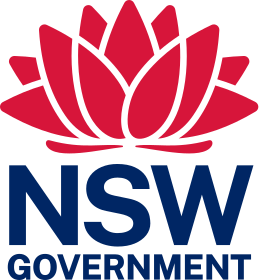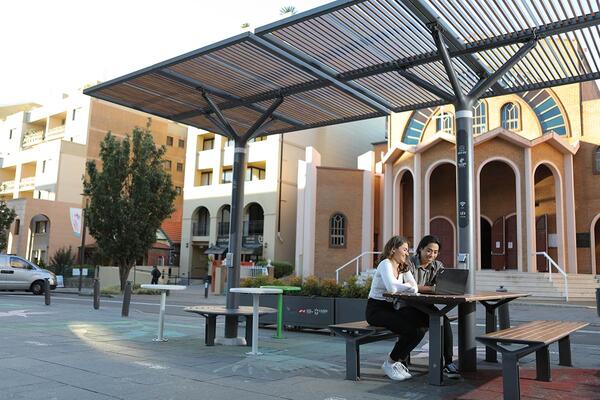
Design

Goals of this stage
At the end of this stage, you should have a plan for implementation. To do this, you will need to:
- Understand the elements of smart place and identify areas for investment
- Establish your connectivity needs
- Identify the digital infrastructure needed to manage your data
- Research the solutions deployed or tested in other places
- Engage the market to uncover new potential solutions
- Select potential solutions to match your problems and opportunities
- Undertake an assessment of costs and benefits
- Set out a plan for asset management
- Determine your project management approach and governance structures for delivery and beyond
- Set out a benefits realisation plan, so you can evaluate your project after delivery.
Continuing engagement with customers and stakeholders
Engaging customers and stakeholders during the Design stage will generate a support base before implementation.
You can involve the community to:
- help identify potential solutions and validate support for new approaches
- find out the types of data and insights that they want and need so this can be factored into your solution design and data visualisation approaches
- share your policies and commitments to managing smart solutions and data in ethical and responsible ways
- uncover any concerns with new technologies and data management so that these can be addressed
scope any digital literacy programs to support your community to participate in your smart place.
Elements of a smart place
Generating and collecting
What happens: Technologies generate data
Tools to make it happen: sensors, cameras, microphones, GPS, social data
Housing and protecting
What happens: Data is transmitted, stored and managed by data custodians
Tools to make it happen: data platforms
Analysing and sharing
What happens: Data sources are brought together. Data is de-identified, cleansed and shared.
Tools to make it happen: machine learning, artificial intelligence tools, open data APIs
Information and acting
What happens: Insights are communicated to inform decisions and drive actions - machine to human or machine to machine.
Tools to make it happen: public display boards, connected street furniture, watches/phones/tablets, internet dashboards, loudspeakers, alarms/alerts, digital twin visualisations
Connecting
What happens: Date and insights are moved through the value chain
Tools to make it happen: power and fibre, 4G/5G mobile networks, Internet of Things networks, Wi-Fi, Bluetooth
When designing your solutions, you need to take into account all parts of the value chain. In order to be successful, you need to support the safe and secure relaying of data and insights.
Smart Places Resource: Technical Guidance - Smart Places Design
This technical guide introduces the role of technology and data in delivering better place outcomes for communities and the core components that provide the foundations for a smart place. It should be read in conjunction with the relevant standards and legislative requirements.
Download now: Technical guidance - Smart Places Design (PDF, 664.5 KB)
It is equally important to have:
- The right connectivity
- The right digital infrastructure and tools to support the movement of data and insights
- Interoperable devices
- Strong cyber security
- The right capability and skilled people to operate and manage the smart systems
- The right policies, processes, guidelines and structures in place to support operations. We call these "foundations".
Connecting your place
Fast, reliable and comprehensive connectivity is the backbone for smart places, regardless of whether you are deploying an individual sensor or a city-wide suite of solutions.
Smart Places Resource: Technical Guidance - Digital Infrastructure Requirements
This technical guide explains common terms, approaches and proposed treatments for embedding enabling digital infrastructure to support Smart Places design and the future needs of the place. It should be read in conjunction with the relevant standards and legislative requirements.
Download now: Technical Guidance - Digital Infrastructure Requirements (PDF, 683.07 KB)
Demand for high speed, reliable digital connectivity is increasing, and it is considered by many households and businesses as an essential service.
However, there is inconsistent access to digital connectivity across NSW and gaps in the affordability, quality and reliability of connectivity.
Australian Digital Inclusion Index
The Australian Digital Inclusion Index uses survey data to measure digital inclusion across three dimensions of Access, Affordability and Digital Ability. The Index provides insights at the local government area level.
These constraints and variations across geographic, demographic and environmental conditions of smart places mean there is no universal way to provide digital connectivity. You should:
- Determine the digital connectivity already in place (fibre, mobile, Wi-Fi, IoT networks) to support the deployment of smart solutions
- Consider working with other place managers or consider taking a suburb or regional approach to establish shared digital connectivity assets.
- Make provision in your designs for additional pit and pipe capacity to allow for future connectivity needs to be met.
Check out the Digital Infrastructure Technical Report (2021) (PDF, 535.08 KB). This provides a technical detail and information necessary for properly planning, designing and constructing 'in ground' capacity for competitive telecommunications and smart infrastructure connectivity across the Western Parkland City. It showcases an approach to designing to meet your connectivity needs.
Summary of connectivity solutions
Fibre-optic (fixed line)
Fibre-optic cable is ideal to accommodate smart place applications as well as future technologies that rely upon high speed, reliable transmission of data. The high-bandwidth and low-latency characteristics of fibre facilitate key applications in smart places, including smart grids for enhanced energy efficiency, sensor networks to improve public services, infrastructure usage and safety, smart mobility for optimising traffic flows & improving road safety, and lastly, city-wide network connections that are available to its residents and visitors.
Internet of Things (IoT) networks
The Internet of Things (IoT) refers to an infrastructure of interconnected objects, people, systems and information resources together with intelligent services to allow them to process information of the physical and the virtual world and react. Cloud-based IoT applications receive, analyse, and manage data in real-time, ranging from environmental data to pedestrian movements, to help place managers, enterprises, and citizens make better decisions.
Mobile
The existing 4G network was designed primarily to enhance mobile data services. However, it can't properly support simultaneous connections and uses a large amount of power. 5G technology will positively impact digital experiences and smart cities and unlock the potential of IoT for smart places. It can upload and download information faster, has very low latency times and the ability to connect multiple devices at the same time. Less latency means compressing the time between sending and receiving signals, which is critical for smart solutions, including connected and autonomous vehicles (CAVs), passenger air vehicles (PAVs) and more.
In Australia, mobile network operators provide mobile coverage in a competitive market.
To know more about the mobile industry, visit the Australian Mobile Telecommunications Association.
Wi-Fi
Public Wi-Fi for smart places opens a world of possibilities, both for the citizens and place managers. Wi-Fi in a smart place can provide internet access to those who would not otherwise have it, and at the same capture anonymised data to support the safety and amenity of the place.
Devices and enabling infrastructure
Sensors and actuators
Sensors, sometimes known as detectors, gather data from the surrounding environment. They are designed to detect and record slight changes in their environment, so that this data can be captured. When sensors are connected, they can capture and relay relevant data in real-time or for post-processing and analytics.
Actuators work in the opposite to sensors: sensors sense, actuators act. Actuators trigger an action or response from a connected piece of equipment.
Smart poles (multi-function poles) and smart furniture
Smart poles (also known as multi-function poles) are connected with fibre and power and can house devices and technology to improve connectivity and collect data in an integrated and modular way.
Smart poles can house accessories:
- 4G / 5G small cells
- Wi-Fi
- Connected CCTV
- Smart lights
- Electric vehicle charging points
- Speakers
- Power and USB outlets
- Signals
- Way-finding and dynamic signage
- Help buttons and microphones
- Smart controls and sensors
- Supporting infrastructure for autonomous vehicles.
If planned well, smart poles can reduce street clutter and eliminate the need for costly retrofitting every time a new device or solution is deployed.
Smart Places Resource: Deploying Multi-Function Poles
This technical guide outlines the proposed deployment of Multi-Function Poles in public spaces to support place-based requirements and Smart Place design, while improving amenity and reducing street clutter.
Download now: Technical guidance - Deploying Multi-Function Poles (PDF, 319.1 KB)
In Australia, multi-function poles have been deployed in some local council areas including the City of Sydney, Geelong and the City of Newcastle.
Image

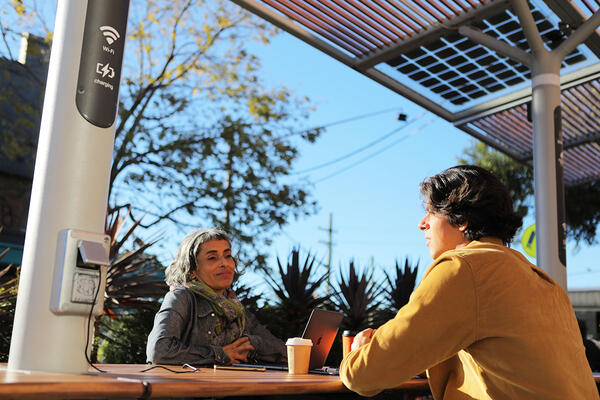
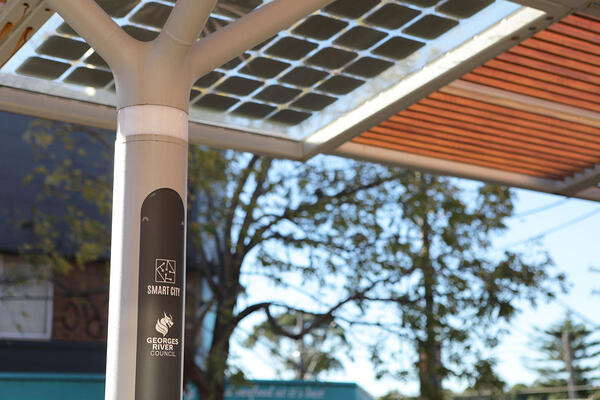
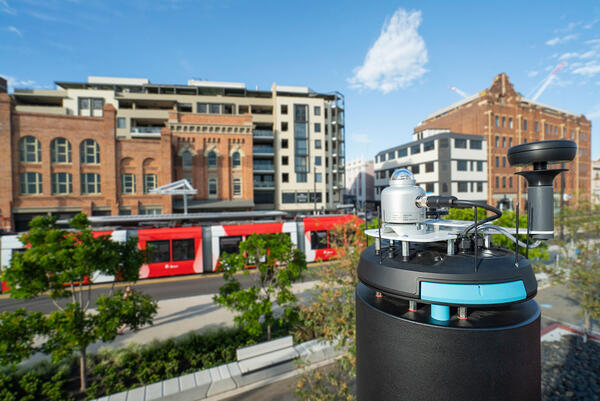
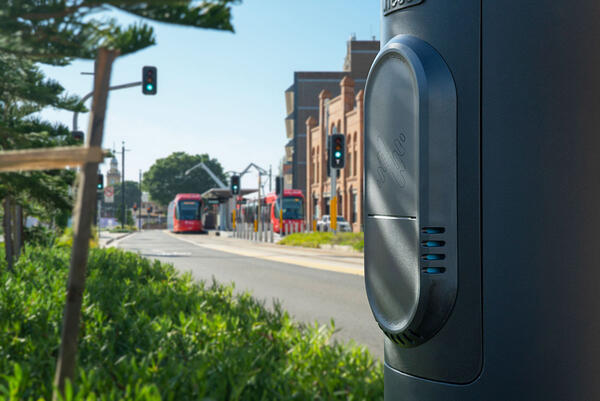
Image controls:
In the City of Sydney, the multi-function poles were deployed in the Sydney Royal Botanic Gardens and the Domain to provide visitors with free internet connection through its Wi-Fi capability with the integration of Optus small cells. Integrating the small cells into the smart poles helped to reduce the visual impact the cells would have otherwise had on the street landscape.
If you are considering rolling out smart poles, know they will be an attractive option for mobile network operators looking to deploy small cells are part of their 5G networks.
Smart furniture is the collective term for urban furnishings in public and open spaces that can be equipped with devices in the same way as smart poles. This includes benches, bus shelters and bins. Connecting this street furniture with power and fibre will allow you to fit them with smart devices, delivering an improved amenity outcome.
To use smart street furniture and smart poles, you will need to make sure you provide or have access to high quality internet and network access and appropriate power. You should ensure all key open spaces have a dedicated internet/fibre connection point. This connection point should terminate in a data cupboard to allow future Wi-Fi, IoT and associated infrastructure to be installed.
Platforms and systems for managing data
During the Design phase, you will need to select a platform or platforms for managing data from smart devices. When doing this, you should:
- Consider adopting a framework approach whereby several best-of-breed solutions are brought together, rather than procuring or developing a single end-to-end data sharing solution.
- Ensure data sharing solutions work optimally together and complement the NSW Government's existing capabilities through the Data Analytics Centre and the NSW Spatial Digital Twin.
- Take an agile approach to the data sharing solutions framework so you can flexibly meet new needs and overcome new challenges when/if they arise.
NSW Spatial Digital Twin
The NSW Spatial Digital Twin provides a platform for data sharing and also has a visualisation tool.
Data storage
Broadly speaking, there are two main environments to consider when deciding how to store data collected from smart devices:
- On-premise solutions require a license to be purchased to use them. Because the software itself is licensed and the entire instance of software resides on-site, there is generally greater protection than with a cloud-based solution. However, the costs associated with managing and maintaining the solution can run exponentially higher than a cloud-based solution. On-premise setups require in-house server hardware, software licenses, integration capabilities and employees for support and management.
- Cloud-based solutions are completely hosted by a third-party provider. This allows for a subscription-based service that can be scaled up or down depending on overall data storage needs, with no capital outlay. The NSW Government Cloud Policy is 'public cloud first', meaning NSW Government agencies must make use of public cloud services as the default.
Achieving interoperability
If you adopt a consistent data and systems architecture across all your different solutions and with other organisations, it makes it much easier to consolidate and share data and move between solution providers and systems. This is called interoperability.
Using standards
Standards can play a strong role in the interoperability of smart places by providing a framework to scale solutions more safely, securely, and efficiently. They can help to provide the 'how' of implementation and scale when place-owners might have already determined the 'why' - realising the benefits, and relevant risks, of digital adoption to smart places.
If you take a standards approach, you will be:
- Better equipped to do pilots and staged rollouts of technology solutions and scale quickly when you find a solution that works.
- Able to keep pace as technology changes, because you won't be "locked in" to a single solution or provider.
- Able to consolidate your data and make it available to others.
You can find out more about standards and the role they play in supporting Smart Places by reading Smart Places Playbook Standards. (PDF, 600.18 KB)
Types of standards and their benefits
Standard group: Governance standards
Benefits
Governance standards provide guiding principles, frameworks, and indicators to enable organisations to meet their responsibilities. These are useful for helping organisations to evaluate, monitor and measure compliance against the organisation's stated objectives. For example, ISO/IEC 27014:2020 Information security, cybersecurity and privacy protection — Governance of information security, provides guidance to organisations on how to evaluate and monitor information-security related processes within an organisation.
Standard group: Management system standards
Benefits
Management standards provide guidance and recommendations on processes and procedures within an area or across a range of disciplines. A popular management standard is the ISO 9001 Quality Management, which sets out processes and procedures to deliver consistent products and services to customers.
Standard group: Technical standards
Benefits
Technical standards provide technical specifications related to a product or service. It may include specific measurements or performance requirements.
Standard group: Visual standards
Benefits
Digital Trust for Places and Routines is an open-source communication standard to increase transparency and accountability for digital technology in public places. The creators of DTPR, Helpful Places have developed a unified taxonomy and visual language to communicate what tech is in a place, how it is used, what it will be used for and provides opportunities for citizens to follow up and learn more or provide feedback.
Data visualisation
Data needs to be delivered in a meaningful way to support decision making. Data visualisation is about providing meaningful and actionable insights derived from the raw data through visual representation.
There are various visualisation tools that can be used to communicate smart place data to stakeholders and decision-makers. The type of visualisation tool will vary depending on the type of data being analysed and decisions you are trying to make.
Before designing dashboards and charts, you will need to think about the end-user of the data and what they need from it. Consider designing a prototype and testing it with users to ensure the visualisations are delivering the greatest value.
Things to consider when deciding on how best to visualise smart place data:
- Two separate visualisation platforms may be needed: one for place-owners and decision-makers to assist with place management and maintenance, threshold monitoring and early warning; and one for the wider community providing localised data to help them live, work and visit a place.
- Consider the visual aspects of the tool and how they can help with insight generation. The display of relevant information should be aligned horizontally and vertically to enhance pattern recognition in graphics. However, ensure the alignment doesn't suggest irrelevant correlations and comparisons.
- Consolidate the data being visualised whenever possible. For example, if two different data sets can be represented on the same axis and still have the desired effect, do so.
- Be wary of over-adorning visualisation tools with over-the-top 3D effects and gaudy colours. These will only make the visualisation more difficult to understand. Keep things engaging but to the point.
Visualising data using digital twins
Spatial Digital Twin
Digital twins are a virtual representation of a real time object, place or thing. In NSW, we have invested in a Spatial Digital Twin, which allows spatialised data to be shared and viewed in four dimensions (with the fourth dimension being time). This is a powerful way for data to be shared and visualised.
Identifying potential solutions
You are now ready to identify technologies available to help address your problem statements or realise the outcomes for your place.
Smart Place Resource: Technical Guidance - Developing Places
This technical guide outlines the proposed treatments for the application of digital infrastructure to different place types. It includes general treatments for greenfield and brownfield/infill, as well as public open spaces, data-intensive industrial areas, and central business and commercial precincts. It should be read in conjunction with the relevant standards and legislative requirements.
Download now: Technical Guidance - Developing Places (PDF, 673.63 KB)
Researching lessons learned
Smart solutions are being deployed across Australia and the world.
It is important that you don't start from scratch, or invest money in pilots, when a solution has been established and discovered.
Invest time in finding out about technical solutions that are in the market already or are being tested that may help address the problem statements or achieve the outcomes you have identified for your place.
You can find out about what is happening in other places, by exploring the resources below.
We are also building a library of case studies on the Smart Places website for you to explore.
SmartNSW Case Study Library
The SmartNSW Case Study Library is a resource showcasing great outcomes for people and places enabled by smart technology and data solutions. Browse the library online to see examples of relevant projects in the design stage.
Resources for lessons learned
Smart Cities Council - ANZ Smart Cities Council - Future of Place
The Smart Cities Council publishes a growing library of smart city resources.
The Smart Cities Council – Future of Place handbook provides guidance on the continually changing nature of our public places and spaces, and the relationship between people, place, technology and data.
Internet of Things of Alliance Australia (IoTAA)
IoT Alliance Australia (IoTAA) is the peak industry body representing the Internet of Things (IoT) in Australia, with over 500 participating organisations and 1000 individual participants working across twelve workstreams.
IoTAA produces a range of publications and resources for its members and wider IoT, business and education community, including research reports and white papers.
Australian Government, Smart Cities Collaboration Portal
The Smart Cities Collaboration Platform aims to facilitate collaboration between Australian cities, suburbs and towns by creating a space for sharing smart city solutions. The platform includes projects funded by the Smart Cities and Suburb Program and independent projects led by local councils.
Australian Government, Smart Cities Communities of Practice
Communities of Practice are a way to share experiences and facilitate collaboration. There are a number of Communities of Practice in relation to smart cities and these are listed on the Australian Government’s smart cities page.
The G20 Global Smart Cities Alliance
The G20 Global Smart Cities Alliance on Technology Governance unites municipal, regional and national governments, private-sector partners and cities' residents around a shared set of principles for the responsible and ethical use of smart city technologies. The World Economic Forum, the International Organization for Public-Private Cooperation, serves as a secretariat for the Alliance.
OECD, Smart Cities and Inclusive Growth
The OECD's Programme on "Smart Cities and Inclusive Growth" aims to redefine the concept of smart cities around the contribution of digital innovation to better lives for all people; measure how smart cities perform and ultimately deliver well-being outcomes for citizens; and guide local and national governments in their efforts to reshape city governance, business models and stakeholder engagement.
Understanding the market
Finding the solutions that are right for you can be a daunting task, particularly as technology changes at a rapid pace. To help identify emerging technologies or new ideas, you should engage with the market.
This involves briefing market participants with your problem statements or outcomes sought for your place (identified during the Discover phase), and inviting them to submit proposals for technology solutions that may be appropriate. Market engagement can also help you find new artificial intelligence solutions and fresh approaches to data management and data visualisation.
Involving the market early can help you to:
- Identify and validate potential solutions
- Understand practical challenges of deployment
- Find opportunities for partnerships to co-develop solutions.
Market engagement can range from the simple exchange of information to a more substantial discussion in a workshop environment, depending on the size and complexity of your project.
Methods and considerations for market engagement
Method: Market sounding
Considerations
Potential providers are 'sounded out' to determine their views of potential solutions and benefits, making any future procurement process more targeted and efficient. Market sounding does not require a commitment of any kind from either side, and there is no formal process for market sounding.
Typical activities include researching and analysing the whole market and meeting selected providers for discussion. Regardless of how the market sounding is run, it is vital to ensure the process remains transparent and providers are treated with fairness and equality. If this is not maintained, the success of any future procurements may be compromised.
Method: Hackathon or Grand Challenges events
Considerations
These events typically have a set problem or challenge and invite participants from industry, government and academia to come together to solve them. They can be very effective in developing novel solutions to difficult problems, and by their nature, ensure that the smart solutions proposed for place-owners are problem-led, not technology-led.
Piloting new ideas
Piloting is a great way for you to test a new solution without committing to the full rollout of the technology.
Piloting usually takes place on a small scale or in an experimental setting, allowing any weaknesses or shortcomings of a new solution to be picked up early before a more comprehensive and expensive rollout of the technology takes place.
A pilot is a great way to establish and quantify benefits of a new approach and generate buy-in from internal and external stakeholders.
Pilot projects can be done:
- when there is an intention to iterate and scale a Smart Place solution. Otherwise, you will not generate any noticeable, longer-lasting impact.
- to check the solution can integrate with existing systems and software, that there is buy-in and engagement from the administrators and users of the solution, and to explore long-term ownership and maintenance implications.
- to test new partnership and ownership models.
Regulatory sandboxes
Collaboration with regulators can yield a 'regulatory sandbox' for your pilot.
A regulatory sandbox is a variation of an exemption from normal legal requirements, with a focus on safety and learning lessons to inform potential regulatory change. Sandboxes are generally only allowed for trials or pilots with limited scope and are subject to the approval of risk management plans or safety management systems.
If the regulatory framework does not currently provide for this kind of sandboxing, then significant time and uncertainty would need to be factored in to account for the necessary regulatory change.
Planning to manage your assets
NSW State Government agencies and councils must have asset management plans, which provide for the 'coordination of activities to realise the value of assets managing the risks and opportunities of assets to achieve balance across cost, risk, and performance'.
The assets in a smart place include:
- physical infrastructure
- digital connectivity
- sensors and actuators
- software
- data.
Each asset has its own lifecycle, replacement schedule and maintenance needs – beginning with planning, design, and asset creation, through ongoing maintenance and eventually disposal.
To realise the benefits of smart places into the future, you will have to ensure regular and ongoing management and maintenance is performed on all of these assets.
Understanding the maintenance needs of your new assets will allow you to allocate appropriate funding. This will lead to proactive maintenance, maximising asset lives so the benefits of smart places continue to be achieved.
The Smart Places Customer Charter Principle 6: Delivering benefits that last illustrates the significance of managing assets for the customer experience.
Smart Place Resource: Technical Guidance - Cataloguing Assets
This technical guide outlines an approach to cataloguing information on assets in smart places to set up the foundations to maximise the deployment of digital connectivity, reduce construction and street clutter and leverage commercial opportunities. It should be read in conjunction with the relevant standards and legislative requirements.
Download now: Technical guidance - Cataloguing Assets (PDF, 389.52 KB)
Asset management considerations
Asset: Systems
Asset management considerations
Smart place solutions will entail new systems and software that may require the expansion of existing systems, such as greater computing capabilities. New systems may also require integration with existing systems. Given the pace of change of technology, plans for system maintenance will need to incorporate regular reviews to allow for upgrades and replacement as appropriate.
Asset: Smart technology assets, such as IoT sensors and devices
Asset management considerations
Smart technology assets such as IoT sensors and devices should be routinely maintained and monitored to ensure that they continue to work properly and securely after they have been deployed. Management of smart technology assets involves registration, configuration and provisioning, maintenance and monitoring of connected devices.
Asset: Data collected
Asset management considerations
Data collection should and occur in line with the best practice guidelines set out in the draft Data Protection Policy and abide by the privacy legislation if personal information is involved. Data collected should also maintain its relevance to the objectives of the technology. A lack of proper data management can result in incompatible data silos, inconsistent data sets and data quality issues that may lead to faulty findings.
Asset: Digital assets, including software and data management systems
Asset management considerations
Digital assets, including software and data management systems, should continue to be updated as per the software recommendations to ensure they are secure and performing at optimum efficiency to provide accurate, available, and accessible information.
Software and data management systems should routinely be checked for bugs and firmware updates.
Asset: Enabling infrastructure assets, such as smart poles and furniture
Asset management considerations
Infrastructure assets that enable smart technology should be catalogued and maintained to ensure they have power, connectivity and continue to provide the required support for their smart technology assets.
Resources for asset management
Asset Management Policy TPP 19-07
The NSW Government Asset Management Policy (PDF, 414.59 KB) considers asset lifecycle costs, performance, risk, and economic modelling to support the strategic priorities of the NSW Government.
NSW Government's Infrastructure Data Management Framework
The NSW Government Infrastructure Data Management framework builds, owns, and manages a significant portfolio of major infrastructure assets. The planning, design, construction, and operation of these assets results in the creation, procurement and use of increasingly valuable data relating to the infrastructure portfolio. This data and information is a state asset that needs to be effectively managed across the lifecycle of the infrastructure assets.
The NSW Smart Places Data Protection Policy
The Policy is designed to support the NSW Smart Places Customer Charter and help you to uphold best practice and adhere to related policies and relevant laws, including the NSW Privacy and Personal Information Protection Act 1998.
Module 8 of the NSW IoT Policy
Module 8 of the NSW IoT Policy provides guidance for place-owners on asset maintenance and management for Smart Place solutions that leverage IoT devices and networks.
Determining the project or program management approach
There are several formally recognised frameworks for project and program. Examples include Prince 2, agile, etc. You will need to determine the framework that best fits the scale, complexity and risk profile of the initiative.
Create a project plan that addresses the following common elements:
- Work breakdown and timeline
- Roles and responsibilities, including governance arrangements
- Budget
- Quality control or benefits realisation
- Risk management
- Stakeholder engagement.
Determining governance arrangements
As part of developing your project delivery plan, you need to set out the governance arrangements for your project or program.
Governance arrangements - you need to consider:
- The size and scale of your project
- Your organisation's governance frameworks and delegations
- The type and number of organisations involved
- The responsibilities and accountabilities of parties involved. Developing a clear responsibility and accountability framework can assist.
- The source/s of funding (or potential sources of funding)
- Your place, and the problems you are trying to solve and the stakeholders related to this.
Your planned governance structures may change, depending on the procurement approaches and partnership models you adopt to deliver your project.
Whilst governance is a familiar practise for city building projects, smart places programs often require innovative models due to the mixture of people and organisations involved and the innovative nature of many of the solutions.
It is useful to examine smart places cases studies to identify how different approaches have been applied.
Establishing costs and benefits
You can now identify and quantify more detailed benefits of the desired outcomes identified in the Discovery phase. From researching and engaging the market, you should also have some cost estimates for the solutions you are planning to invest in.
When setting out cost estimates, be sure to identify any additional costs in establishing your project or program, including resourcing requirements and education and training to help people use technology or to complement the technology itself.
By weighing the solution benefits against the costs, you will give decision-makers an indication of whether the initiative is worth investing in. This is called a Cost Benefit Analysis; a systematic approach to calculating and comparing the benefits and costs of a course of action in a given situation.
NSW Treasury Guidelines – Cost Benefit Analysis
NSW Treasury Guidelines – Cost Benefit Analysis provide will help you to undertake a cost benefit analysis to weigh up risks and benefits versus costs.
NSW Government Project Management Guideline
The NSW Government Project Management Guideline provides direction on best practice in project management, describing what senior management should expect from a project (regardless of its size) and identifying the questions to ask at various stages.
Establishing a benefits realisation plan
Before you start delivering your smart place solutions, you should establish an evaluation framework and benefits realisation plan. This should outline the benefits you aim to deliver and how you will measure the impact of your project or program.
You may need to gather baseline data to help you track and quantify progress.
Building capability and further learning
Smart NSW Case Study Library
The Smart NSW Case Study Library is a resource showcasing great outcomes for people and places enabled by smart technology and data solutions. Browse the library online to see examples of relevant projects in the design stage.
SmartNSW Masterclasses
The SmartNSW Masterclass series is building a confident, skilled public sector workforce, able to use technology and data as core business. Relevant sessions are highlighted below.
2021 Smart Places Masterclass Series
This Masterclass series, co-hosted with the Australian Computer Society explored core drivers in smart places.
Relevant sessions include:
- Session 02: Smart Place Standards with Adam Beck, Jed Horner and Chris Body
- Session 03: Digital Twins with Adam Mowlam, Tim Mumford, Marie Truelove and Mats Henrikson
- Session 04: Data Sharing and Use, AI and Data Governance with Annette Slunjski, Fang Chen and Aurelie Jacquet
- Session 05: Smart Places Maturity Models with Jacinta Hargan, Piers Hogarth-Scott and Zoe Eather
- Session 06: 5G and Smart Places with Matt Schultz, Mike Wood , Troy Daly and Matt Evans
- Session 09: An overview of ioT in Smart Places with Frank Zechner, Pascal Perez and Kim Yan
